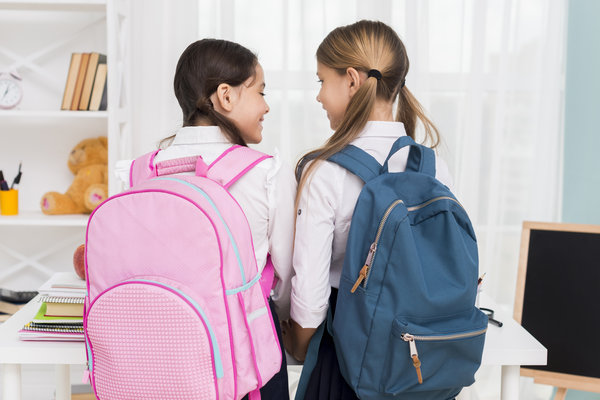Your child’s school backpack is one of the most important items to purchase on your back to school shopping list. A good backpack will need to handle excessively heavy books, survive sudden rain showers, crammed into locker storage, and withstand the general rough treatment that children dish out on their belongings. Because it receives constant, daily use, it is crucial to choose a quality backpack. Here are a few simple tips to help you find the right school backpack.

QUALITY COUNTS IN BACKPACKS
The best time to purchase school backpacks is during the back-to-school shopping season as it normally offers the widest selection of school backpacks and the best sales. However, you need to shop smartly as backpack quality and price can vary widely. Also, don’t be tempted to buy those backpacks that are cheap, cool and trendy, with the assumption that if you have any problems, you can easily replace it. The challenge is that you may not be able to find a good backpack easily that fits your child after the back-to-school sale season, as the remaining stock may be limited or have defects.
When inspecting a backpack, you need to look over the entire backpack, inside and out, and keep an eye on the following:
- Check that the packed backpack weight totals to no more than 10-20% of your child’s’ bodyweight depending on their age. A good tip during shopping is to bring some books, lunch box, water bottle etc to put into the backpack to test the backpack’s weight distribution.
- Choose backpack materials that are made from light and water-resistant fabric.
- Don’t choose backpacks with zippers that are openly exposed to weather. Instead, opt for zippers that have fabric flaps over them to keep water and other elements out of the backpack.
- Avoid backpacks with loose, uneven or careless stitching
- Avoid backpacks with raw or frayed fabric edges which could unravel easily
A BACKPACK NEEDS TO FIT PROPERLY
- Choose the proper size: The width of a backpack should be relatively proportionate to a person’s width. For example, a preschool child, primary/elementary child or secondary/high school child would need different sized backpacks. Also pay attention to the backpack’s height which should extend from approximately two inches (5cm) below the shoulder blades to waist level, or just slightly above the waist.
- Choose broad, adjustable, and padded backpack straps: Broad, padded backpack straps are designed to protect the shoulders from excessive pressure and to offer better comfort. Adjustable straps are useful to ensure proper fit and positioning of the backpack, which should sit slightly above the waist. It is also important to encourage your child to set both straps at an even length and wear both straps of the backpack to distribute the weight evenly as just one strap adds extra strain to that one shoulder.
- Choose backpacks with waist straps and padded backs: For students that must carry heavier loads or have a longer commute to school, backpacks that have a padded back will provide even more comfort. For additional support, waist straps can transfer some of the weight off the back onto the waist, helping to prevent slouching and bad posture.
FEATURES AND STYLE ALSO MATTER
-
- Choose backpacks that help you organise better: A good backpack’s dividers, pockets, and slots are designed to help you organise better and to evenly distribute the weight. Think of organization and functionality, prioritising backpacks with features that will make your items easy to find. Also make sure to place heavier items closer to the person’s back within the backpack as this helps with centre of gravity and balance.
- Choose backpacks that increase safety: Choose backpacks that have reflectors and reflective tape to increase visibility. This is especially important if your child walks to school or waits beside a road for the school bus during the darker hours of the early morning. It is also advised to not have your child’s name written on the outside of the backpack for strangers to see. To identify the backpack belongs to your child in case it is lost, it is better to have initials monogrammed on the outside or write a label inside an inner pocket of the backpack.
- Consider your child’s personal style and make a joint decision: While proper fit and good quality are the biggest factors to look for, it makes sense to choose a backpack your child likes as they will be using their backpack almost daily. Do help your child make a smart purchase, but also give your child the room to make the final selection.










